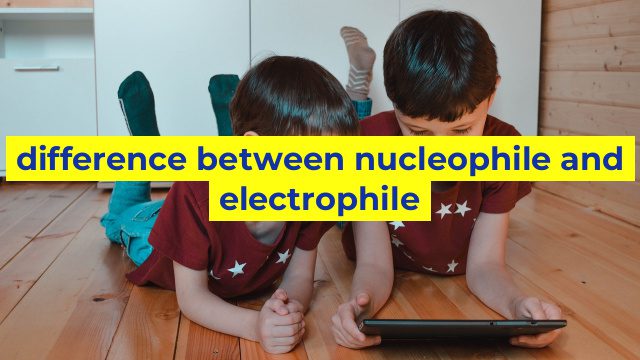The Difference Between Nucleophile and Electrophile
Our world is made up of countless chemical reactions, and the classification of molecules as nucleophiles or electrophiles is central to understanding these reactions. Although both nucleophiles and electrophiles are molecules that are used in chemical reactions, they have different chemical properties and behaviors. In this article, we will explain the difference between nucleophiles and electrophiles and their significance in chemistry.
What is a Nucleophile?
A nucleophile is a molecule or an ion that is attracted to positively charged atoms, known as electrophiles. In other words, a nucleophile is a molecule that has one or more lone pairs of electrons that are available to bond with positively charged atoms. Nucleophiles are thus electron-rich molecules and can donate their electrons to an electrophile in order to form a chemical bond.
Some examples of nucleophiles include hydroxide ions (OH−), carbanions, ammonia (NH3), and water (H2O). These molecules are attracted to the electrophilic carbon atoms in reactions such as substitution and addition.
What is an Electrophile?
An electrophile is a molecule or an ion that is attracted to negatively charged atoms, known as nucleophiles. In other words, an electrophile is a molecule that has a positive charge (sometimes partial) or a partially positive region that can accept a pair of electrons from a nucleophile. Electrophiles are thus electron-poor molecules and can accept electrons from a nucleophile to form a chemical bond.
Some examples of electrophiles include carbocations, carbonyl groups (C=O), and positive halogen species such as H-X, where X is a halogen atom. These electrophiles can react with nucleophiles to form new chemical bonds through reactions such as elimination, rearrangement, and substitution.
Conclusion
In summary, nucleophiles and electrophiles are molecules that are central to chemical reactions. While nucleophiles are electron-rich molecules that can donate electrons to an electrophile, electrophiles are electron-poor molecules that can accept electrons from a nucleophile. Understanding the difference between these two types of molecules is essential in predicting the outcome of chemical reactions and designing new chemical processes.
Table difference between nucleophile and electrophile
Difference Between Nucleophile and Electrophile
| Criteria | Nucleophile | Electrophile |
|---|---|---|
| Definition | A nucleophile is a substance that donates a pair of electrons to form a new covalent bond. It is an electron-rich species. | An electrophile is a substance that accepts a pair of electrons to form a new covalent bond. It is an electron-deficient species. |
| Charge or polarity | Nucleophiles are generally negatively charged or have a lone pair of electrons that can be shared, making them negatively polarised. | Electrophiles are generally positively charged or have an incomplete valence shell, making them positively polarised. |
| Participation in chemical reactions | Nucleophiles typically participate in substitution and addition reactions. | Electrophiles typically participate in elimination and substitution reactions. |
| Examples | Alcohols, amines, and water are examples of nucleophiles. | Carbocations, metal ions, and halogens are examples of electrophiles. |
